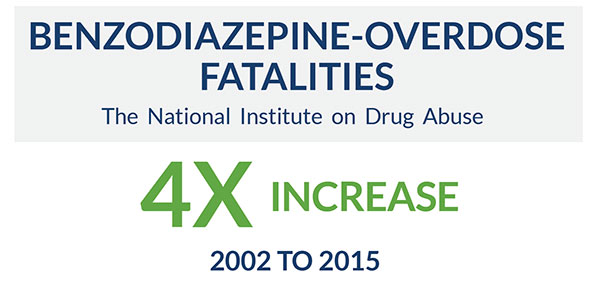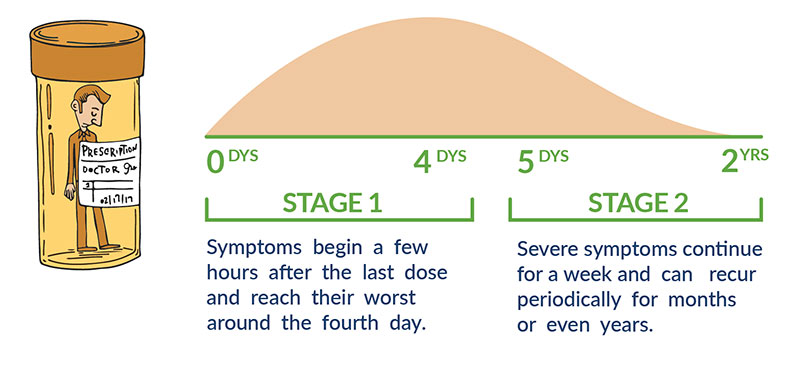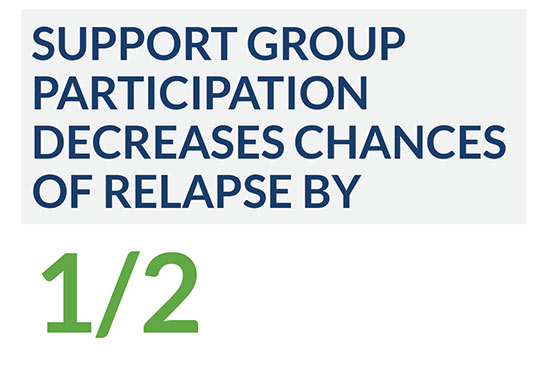Read the latest and greatest from our team
of incredible specialists.

Beach House Recovery Center » Blog » Xanax Detox – Withdrawal Symptoms and Timeline
Xanax, a benzodiazepine medication introduced in 1981, is used to treat anxiety and panic disorders. In the early twenty-first century, it was the most commonly prescribed psychotropic (mood-altering) drug in the United States. Xanax is normally sold as “immediate-release” tablets to take in case of anxiety attack, or as daily-dose “extended-release” tablets.
Like other benzodiazepines, Xanax is a tranquilizer that inhibits muscle-tremor and panic reflexes. Because physical dependence can develop within four to six weeks, it is best used as a short-term solution so patients can regain normal functioning long enough to learn non-drug coping strategies. Unfortunately, the “quick fix” tempts many people to keep relying on the drug. Regular users range from senior citizens to middle school students. They also include executives and popular entertainers: it’s not uncommon to hear Xanax extolled in rap lyrics.

The demand for illicit Xanax is high enough that “counterfeit” pills are also sold widely. These contain no actual benzodiazepine and often substitute fentanyl, a super-potent and extremely dangerous opioid. Even with pharmacy-provided Xanax, some users increase their overdose risk by crushing extended-release tablets to extract larger doses.
 The National Institute on Drug Abuse reported a more than fourfold increase in benzodiazepine-overdose fatalities from 2002 to 2015. Two-thirds of these cases may have also involved other drugs. Xanax is particularly dangerous in combination with other depressants, a mix which can trigger lethal slowing of vital functions. The FDA advises doctors not to prescribe benzodiazepines to anyone taking opioid medications: people taking Xanax should also abstain from alcohol.
The National Institute on Drug Abuse reported a more than fourfold increase in benzodiazepine-overdose fatalities from 2002 to 2015. Two-thirds of these cases may have also involved other drugs. Xanax is particularly dangerous in combination with other depressants, a mix which can trigger lethal slowing of vital functions. The FDA advises doctors not to prescribe benzodiazepines to anyone taking opioid medications: people taking Xanax should also abstain from alcohol.
Nearly 125,000 emergency-room visits a year are due to using Xanax apart from official medical instructions.
However it’s used, Xanax quickly induces an overall sense of calm and sometimes euphoria. (Many people, however, report less desirable effects such as drowsiness, poor coordination and memory problems.) Under the influence of Xanax, muscles relax and heart rate slows. If enough is taken to induce an overdose (which requires immediate medical attention), common symptoms include:
Someone who develops addiction may become chronically drowsy and sluggish, or complain of blurred vision and dizzy spells. Some medical experts believe that long-term overuse can cause permanent brain damage.
If the Xanax supply is abruptly cut off, typical withdrawal symptoms include:
Seizures can also happen during withdrawal from Xanax— yet another reason why medically monitored detox is the only option for anyone with a Xanax dependency.
Withdrawal symptoms are likely to be most severe in people who have taken Xanax for long periods in heavy doses, have used other drugs or have additional physical or mental health conditions.

Xanax has among the shortest of drug half-lives, which means it leaves the body quickly but also manifests withdrawal symptoms quickly. When the drug is stopped cold turkey, symptoms begin a few hours after the last dose and reach their worst around the fourth day as the physical system flushes out the last of the actual Xanax. Severe symptoms continue for about a week as the body adjusts to the absence of its accustomed chemical crutch. However, symptoms can recur periodically for months or even years.
As with any addiction, relapse remains a high risk for some time, particularly when old stresses or drug-use associations resurface. This is one reason why professional treatment, with therapy, is always recommended for getting off Xanax. The best therapy covers:
When it comes to choosing a treatment program, the first big decision (aside from the center’s reputation and qualifications) is usually whether to register for inpatient or outpatient treatment. With inpatient care, the patient lives in detox-center-supervised housing throughout several weeks or months of post-detox rehab. Inpatient care is recommended if:
Few patients fresh from detox are ready to resist old temptations immediately. In inpatient care, temptations are guaranteed to remain a safe distance away, and professional support near at hand. Other advantages of inpatient care include:
With outpatient care, a patient lives offsite and reports to detox facilities for ongoing therapy.
Outpatient care may be preferable for someone who:
Some detox centers use a combination approach—at least 30 days of inpatient treatment followed by 30-60 days of outpatient care.
Regardless of what program is chosen for post-detox rehab, physical detox should always be undertaken in an inpatient setting, especially with benzodiazepines and especially with short-acting benzos such as Xanax. Physical withdrawal from Xanax and other benzo drugs comes with high risk of potentially life-threatening reactions:
Besides staff experienced in nursing care and emergency first aid, detox centers have access to licensed MDs who can arrange for prescription medications if these are needed to ease withdrawal.
Benzodiazepine detox providers frequently use the “tapered” approach, administering gradually reduced doses rather than abruptly cutting off the supply. “Tapering” spares the body and brain the worst of cold-turkey shock. Often a benzodiazepine with a longer half-life (Klonopin, Librium and Valium are popular options) is substituted for Xanax, to reduce the risk of complications by allowing for less frequent doses.
Perhaps the biggest risk of tapering is that a patient will become impatient. Getting completely “clean” of benzos can take a year or more, and consequences could be lethal if someone yields to temptation to either quit abruptly or give up and return to the old dose. Anyone on a tapering program should make sure they have ongoing therapy and support.
Other factors to consider in choosing a treatment program include:
Cost—and what health insurance/VA/Medicare will pay for—is another consideration. However, even the most expensive treatment option may spare a heavy Xanax user years of additional costs for Xanax, related health issues and lost productivity. If insurance doesn’t cover everything, payment plans, charitable assistance and outpatient options can reduce financial strain.
Even after official treatment is complete, recovery is a lifelong journey—the specter of relapse temptations rarely is completely exorcised. The best way to minimize risks of relapse is to stay in close touch with a support network: regular participation in a 12-Step or similar group can cut the danger by as much as half.
 Other approaches that increase long-term success in recovery:
Other approaches that increase long-term success in recovery:
Bean, Shawn (2016, June 8). “Xanax ‘Helps Me Be a Better Mom.’” CNN.com. Retrieved from https://www.cnn.com/2013/02/18/health/parents-antidepressants/index.html
Blaszczak-Boxe, Agata (2016, February 22). “Overdoses on Anti-Anxiety Meds Such as Valium and Xanax Are on the Rise.” The Washington Post. Retrieved from https://www.washingtonpost.com/national/health-science/overdoses-on-anti-anxiety-meds-such-valium-and-xanax-are-on-the-rise/2016/02/22/4f6a6d8e-d727-11e5-be55-2cc3c1e4b76b_story.html?utm_term=.1a72c2879664
Chan, Stella (2017, June 6). “11 Middle Schoolers Hospitalized After Sharing Xanax.” CNN.com. Retrieved from https://www.cnn.com/2017/06/06/health/children-hospitalized-xanax-trnd/index.html
CNN.com (2014, May 22). “Xanax-Related ER Visits Double in 6 Years.” Retrieved from http://thechart.blogs.cnn.com/2014/05/22/xanax-related-er-visits-double-in-6-years/
Ganim, Sara (2017, March 17). “Pill Presses for Counterfeit Drugs Seized in Record Numbers.” CNN.com. Retrieved from https://www.cnn.com/2017/03/17/health/pill-presses-counterfeit-fentanyl/index.html
Johnson, Brian, and Jon Streltzer (2013, August 15). “Risks Associated with Long-Term Benzodiazepine Use.” American Family Physician, Vol. 88, No. 4, pp. 224–225. Retrieved from https://www.aafp.org/afp/2013/0815/p224.html
Jordan, Jay R. (2018, March 22). “Houstonians Arrested with Enough Fentanyl to ‘Kill Everyone in Toledo.’” Houston Chronicle. Retrieved from https://www.chron.com/news/houston-texas/houston/article/fentanyl-arrest-Houston-Ohio-enough-to-kill-12775134.php
National Institute on Drug Abuse (2018, July). “Commonly Abused Drugs Charts: Central Nervous System Depressants.” Retrieved from https://www.drugabuse.gov/drugs-abuse/commonly-abused-drugs-charts#CNSdepressants
National Institute on Drug Abuse (2011, May). “Drug-Related Hospital Emergency Room Visits.” Retrieved from https://www.drugabuse.gov/publications/drugfacts/drug-related-hospital-emergency-room-visits
National Institute on Drug Abuse (2017, September). “Overdose Death Rates.” Retrieved from https://www.drugabuse.gov/related-topics/trends-statistics/overdose-death-rates
Olsen, Lise (2010, December 13). “Abuse of Prescription Drugs Is on the Rise Across Texas.” Houston Chronicle. Retrieved from https://www.chron.com/news/houston-texas/article/Abuse-of-prescription-drugs-is-on-the-rise-across-1697224.php
O’Neill, Julie (2012, April 30). “Hospital Seeing More Babies Born Exposed to Prescription Drugs.” CNN.com. Retrieved from https://www.cnn.com/2012/04/28/health/drug-babies/index.html
Patterson, Eric. “The Effects of Xanax Use.” DrugAbuse.com. Retrieved from https://drugabuse.com/library/the-effects-of-xanax-use/
Raison, Charles (2010, March 23). “Expert Q & A: What Are the Long-Term Brain Effects of Xanax?” CNN.com. Retrieved from http://www.cnn.com/2010/HEALTH/expert.q.a/03/23/xanax.long.term.use.raison/index.html
Raison, Charles (2011, October 4). “Is There a Wrong Way to Detox off Xanax?” CNN.com. Retrieved from http://thechart.blogs.cnn.com/2011/10/04/is-there-a-wrong-way-to-detox-off-xanax/comment-page-1/
Ramirez, Fernando (2017, August 19). “Texas Child Hospitalized After Eating Xanax He Was Told Was a Tic Tac.” Houston Chronicle. Retrieved from https://www.chron.com/news/houston-texas/houston/article/Texas-child-hospitalized-after-eating-Xanax-he-11943500.php
Richards, Chris (2017, April 20). “Soft, Smooth and Steady: How Xanax Turned American Music into Pill-Pop.” The Washington Post. Retrieved from https://www.washingtonpost.com/lifestyle/style/soft-smooth-and-steady-how-xanax-turned-american-music-into-pill-pop/2017/04/19/535a44de-1955-11e7-bcc2-7d1a0973e7b2_story.html?utm_term=.bd5acf4ff0b7
Span, Paula (2018, March 16). “The New Old Age: A Quiet Drug Problem Among the Elderly.” The New York Times. Retrieved from https://www.nytimes.com/2018/03/16/health/elderly-drugs-addiction.html
Substance Abuse and Mental Health Services Administration (2014, December 18). “Combining Benzodiazepines with Other Substances Raises Risks.” Retrieved from https://www.samhsa.gov/newsroom/press-announcements/201412180300
Substance Abuse and Mental Health Services Administration (2014, May 22). “Emergency Departments See Increased Visits Involving the Nonmedical Use of Sedative Alprazolam.” Retrieved from https://www.samhsa.gov/newsroom/press-announcements/201405220400
Substance Abuse and Mental Health Services Administration (2015, October 27). “Types of Commonly Misused or Abused Drugs.” Retrieved from https://www.samhsa.gov/prescription-drug-misuse-abuse/types
Tiefer, Lenore (2015, August 7). “If You Give a Mouse a Xanax.” The Wall Street Journal. Retrieved from https://www.wsj.com/articles/if-you-give-a-mouse-a-xanax-1438978022
U.S. Food and Drug Administration (2016, August 31). “New Safety Measures Announced for Opioid Analgesics, Prescription Opioid Cough Products, and Benzodiazepines.” Retrieved from https://www.fda.gov/drugs/drugsafety/informationbydrugclass/ucm518110.htm.
Weil, Martin (2017, April 25). “Possible Xanax Use at School Investigated in Loudoun.” The Washington Post. Retrieved from https://www.washingtonpost.com/local/possible-xanax-use-at-school-investigated-in-loudoun/2017/04/25/faf25c74-2970-11e7-b605-33413c691853_story.html?utm_term=.ef2a3400f8d5
Williams, Alex (2017, June 10). “Prozac Nation Is Now the United States of Xanax.” The New York Times. Retrieved from https://www.nytimes.com/2017/06/10/style/anxiety-is-the-new-depression-xanax.html
Whether you’re researching for yourself or a loved one, Beach House can help. We understand that this is a serious time in your life and that the treatment center you choose matters. We want you to feel comfortable and empowered to make the right decision for yourself, a friend, or a family member. This is why a counselor is waiting and available to answer your questions and help put your mind at ease regarding the next steps. Many of the staff at Beach House have walked in your shoes. If you feel you’re ready or want more information about how to help a loved one, we can help today. You can also learn why we are voted the #1 rehab for addiction treatment in Florida.





"*" indicates required fields